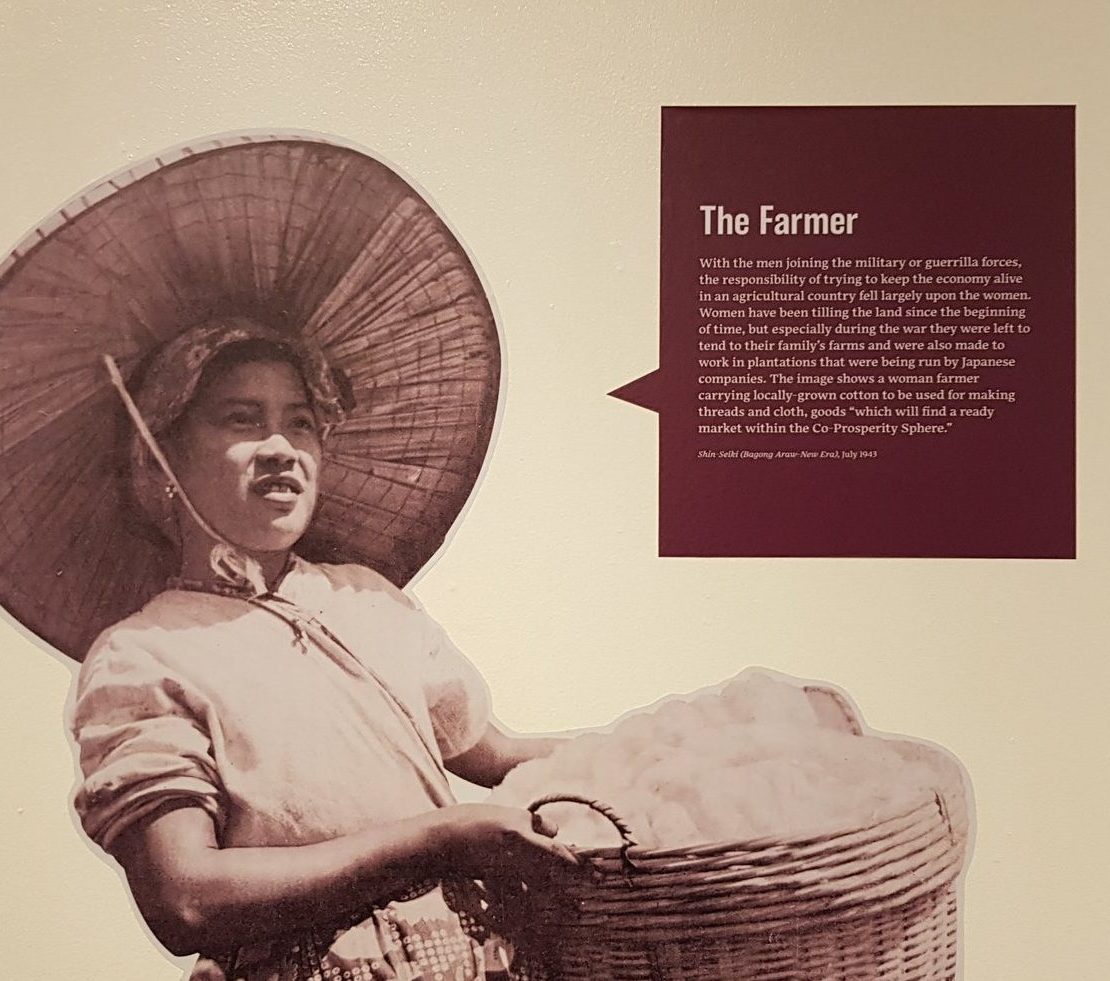What did women do during the war?
Unless you already have a vested interest in this point in Philippine history (or women’s part in the country’s history as a whole), I’m betting that you don’t have an answer to that question. “They were busy…being victims of war?” might be your closest guess. I don’t blame you.
Even though many women took on very visible and active roles during the second world war (and really, all the wars our country took part in), Philippine history still follows a male narrative. And this narrative eithers make a woman invisible or, when it isn’t able to push her out, treats her as a laudable exception. In order to push the idea of war as a man’s game, history occludes the stories of the very real women that existed.
Which is why the Ayala Museum has stepped up to show the diverse wartime roles women played with their “Women & War” exhibit. Under their Filipinas Heritage Library wing, “Women & War” looks into the woman’s role as farmer and as warrior. And in the case of the comfort women, also shows her as a survivor of systematic rape.
My second bet: when you hear about women helping out during the war, did you immediately imagine homely women spinning a spindle, making uniforms for the male soldiers? Not to demean the women who did end up taking on typically feminine duties, but women took on many roles, some of them more typically masculine.
View this post on Instagram
A post shared by Filipinas Heritage Library 🇵🇭 (@filipinasheritagelibrary) on
Did you know that there were female troops? The Women’s Auxiliary Service was founded and headed by Josefa Capistrano, and she personally oversaw the training of women as soldiers, medics, and other important roles to help the war efforts. What about rebel fighters? When the Japanese occupation started, film actress Carmen Rosales quickly joined the Huk rebellion and herself became an underground rebel soldier, one of the many women that took up arms to quietly fight tyranny.
And because women are made invisible by history, the horrors of war that they face are also silenced by history. Or if not silenced, then sanitized. The Japanese soldiers abducted and raped women, calling them comfort women—an incredibly cruel term that mocks the rape that took place. These women were sex slaves, rape victims. Even now, comfort women are not given the respect that they are owed: The acknowledgment that the rape happened.
It’s easy to forget what our women went through during WWII at the hands of Japanese soldiers, but we shouldn’t.
This is the Song of the Malaya Lolas, a song recounting the terrors these women had to endure. pic.twitter.com/iRBzVPNUve
— Ayala Museum (@ayalamuseum) March 1, 2019
Hideko Mitui highlighted in her journal article “The politics of national atonement and narrations of war” that the language used in the Japanese-set up fund for the comfort women emphasized the plight of the survivors while erasing the soldiers who raped them. According to her analysis, the language showed that war, which everyone suffered from, was what raped the comfort women, not the soldiers. This shows that we still have a long way to go in making the women’s shared plight known.
If you want to learn more about the narratives of women during World War 2, you can drop by the “Women & War” exhibit until Mar. 10. Admission is free.
Photos courtesy of Ayala Museum
Get more stories like this by subscribing to our newsletter here.
Read more:
Remembering the “Rape of Manila”
Important statue honoring sexual abuse victims of WWII disappears
Read more by Zofiya Acosta:
Momo Challenge is mostly a hoax, but you should still check in with your kids
We’re seeing an epidemic of measles—a “completely avoidable” disease
Refugees walk 13 times the distance between earth and sun every year
Writer: ZOFIYA ACOSTA




